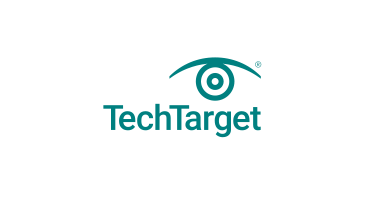CAMBRIDGE – Approximately a month after declaring that the public cloud has left IT teams with post-traumatic stress disorder, Broadcom President and CEO Hock Tan is aiming to close the communication and experience gap between users and VMware.
Broadcom’s acquisition of VMware was completed last November, but customers are still uncertain about how this change in ownership will impact their daily IT operations and budgets. During his keynote address at the Boston VMware User Group (VMUG) UserCon on Thursday, Tan reiterated his August message from VMware Explore: VMware will concentrate on providing a private cloud experience for customers’ on-premises workloads. However, at the VMUG event, he also clarified that the company will maintain hybrid cloud connections with major hyperscalers.
Tan announced that tailored versions of VMware Cloud Foundation (VCF) are in progress for AWS, Microsoft Azure, and Google Cloud Platform. Customers with existing VCF licenses will have access to these versions at no extra cost beyond the existing per-core pricing. This cloud license will also be available to select cloud service providers, such as IBM and Equinix.
“These three public clouds will directly run applications built on vSphere in their environments,” Tan noted. “You won’t be charged twice.”
He is also focused on providing more opportunities for VMware users to obtain VCF licenses at a lower price, along with complimentary training programs specifically designed for current VMware professionals and advocates.
“We are highly invested in ensuring you can assist us in driving this initiative,” he stated. “I shouldn’t refer to you as customers; you’re our partners.”
‘Captive Audience’
However, some customers do not perceive their relationship with VMware as collaborative. Broadcom has implemented licensing changes by consolidating previously separate software products into four bundled subscription services. VCF is the most comprehensive and costly option, while other bundles exclude certain offerings like NSX networking software to lower the price.
These changes have left many VMware customers frustrated, with several UserCon attendees expressing that their organizations feel like a “captive audience” to Broadcom’s initiatives. This sentiment stems from their reliance on VMware technology or their renewal of licensing agreements before they could explore other options.
Kathleen Orben-Hall, a senior systems engineer at Connection, an IT services provider in Merrimack, N.H., commented that while Tan might not be wrong about customers wanting to exit the public cloud and return workloads on-premise to cut costs, the licensing alterations could hinder those private cloud ambitions. “Customers are anxious and trying to figure out how to transition away,” she remarked. “We have several clients just biding their time until their licenses expire. It’s a rollercoaster of emotions right now.”
The longstanding integration between VMware and various IT technologies makes switching to alternative platforms a challenging endeavor that could result in fewer support and partner service options.
William Cook, a systems engineer at FirstLight Fiber, a fiber optics communications provider in Albany, N.Y., highlighted his organization’s attendance at the conference to better understand how the transition to a VCF subscription would impact their core operations. “We can’t simply switch paths, but [the licensing changes] have prompted us to reevaluate,” he said.
Broadcom’s Bridging Efforts
Despite Broadcom streamlining VMware’s offerings to four subscription bundles, options and flexibility remain for VMware customers, according to Matt Heldstab, vice president of VMUG globally and an enterprise systems engineer at Minnesota State Colleges and Universities. He advised users to assess CPU utilization, consider which subscriptions provide necessary services, and proactively engage with account support teams to mitigate subscription costs. Additionally, prospective buyers should compare previous initial licensing costs of standalone software with today’s flat subscription pricing.
“Your experience may differ based on your [account] support team,” Heldstab noted. “A one-size-fits-all approach is not feasible with Broadcom.”
Even though some customers have attempted aggressive negotiation tactics, Heldstab mentioned that Tan is attuned to customer concerns and is open to engaging directly with users at VMUG events. “He has told the VMUG board, ‘Let me know where you think I should be, and I will do my best to be there,'” he said. “He’s a great asset for VMUG, and we’re glad to have him.”
Tan also reassured VMware’s small and medium-sized business (SMB) customers that they have not been neglected. He intends to promote VCF adoption among this market, as well as with existing major clients. “We began with our largest enterprises, but we’re not excluding others,” Tan emphasized. “We’re reaching out to everyone.”
Furthermore, Tan indicated that VMware’s internal IT systems have been reorganized to provide a more cloud-like experience for its developers, and he anticipates delivering a similar experience to customers through service catalogs and on-demand capabilities, regardless of their infrastructure.
Tim McCarthy is a news writer for TechTarget Editorial, covering cloud and data storage topics.









